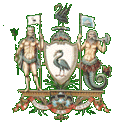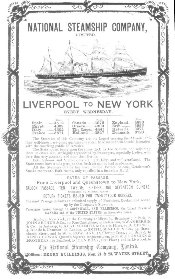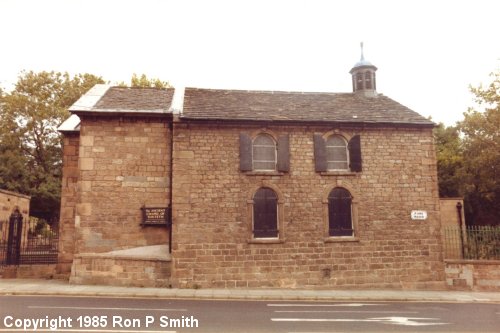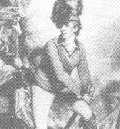

Last Updated : 30 Aug 2009
Pre-1900
Early Years
Emigration & Growth
Business & Prosperity
People
Public Houses
Sea Shanties
Contact
My great grandfathers moved to Liverpool, England in the late 19th century. Liverpool has a fascinating history and here is just a brief summary of part of it.
By British standards Liverpool is a new city and though many of the towns and villages that were absorbed into it’s suburbs were there then, Liverpool itself has no record in the Doomsday Book of 1086. When William Roscoe a prominent Liverpool politician was born in 1753 it took 4 days to get from Liverpool to London by coach. Liverpool is 65 miles nearer to Dublin than it is to London. However, Liverpool's links with Ireland go back much further than that. In the year 432, Scottish born Saint Patrick was in Liverpool before sailing to Ireland.
 In the days before air travel and the car, Liverpool maintained strong links with many parts of the world including those in Europe, Africa, America and the Far East. In 1737 the Tower of Liverpool, a red sandstone fortress, previously owned by the Stanley family was let to the city as a jail for French prisoners of war. Many escaped and a number were also later paroled and found wives in the area thereby producing descendants in Liverpool today.
In the days before air travel and the car, Liverpool maintained strong links with many parts of the world including those in Europe, Africa, America and the Far East. In 1737 the Tower of Liverpool, a red sandstone fortress, previously owned by the Stanley family was let to the city as a jail for French prisoners of war. Many escaped and a number were also later paroled and found wives in the area thereby producing descendants in Liverpool today.
The city’s population grew quickly. For example between 1831 and 1841, Liverpool’s population rose by 43%. In 1847 alone, 300,000 Irish refugees came to Liverpool to leave the famine behind. Many would have crossed the Irish Sea for just six pence on the so called "coffin ships".
 Many Irish people also travelled on to America in search of better prospects. Between 1830 and 1930, 9 million emigrants sailed from Liverpool to America. In 1790 the 13 eastern states had a population of only 4 million. In the following two hundred years around 40 million immigrants joined them. By 1845 only 1.5 million had gone in total but failure of the Irish potato crop in 1845 & 1846 resulted in about a quarter of the population emigrating within 10 years. In those days nearly a 1000 ships a year with up to 200,000 emigrants sailed from Liverpool to America. Each emigrant had to pass a "medical examination" before sailing. Up to 3000 per day went went through this process. 1847 was a bad year for emigrants with 17,465 or 1 in 6 dying on their way to North America.
Many Irish people also travelled on to America in search of better prospects. Between 1830 and 1930, 9 million emigrants sailed from Liverpool to America. In 1790 the 13 eastern states had a population of only 4 million. In the following two hundred years around 40 million immigrants joined them. By 1845 only 1.5 million had gone in total but failure of the Irish potato crop in 1845 & 1846 resulted in about a quarter of the population emigrating within 10 years. In those days nearly a 1000 ships a year with up to 200,000 emigrants sailed from Liverpool to America. Each emigrant had to pass a "medical examination" before sailing. Up to 3000 per day went went through this process. 1847 was a bad year for emigrants with 17,465 or 1 in 6 dying on their way to North America.
By 1855 emigration was falling off. Ireland was no longer starving and wages in England had risen. Unemployment had started to become a problem in America. In fact so significant was it that in 1854 and 1855 a total of 30,000 unemployed immigrants sailed back to Liverpool.
The large influx had created special problems for Liverpool. In 1849 it was estimated that a total of 23,000 children were running wild in the dockland area alone. By 1880 Liverpool’s population had exceeded 600,000. Even before the mass immigration of the 1840’s large numbers of Irish people had been coming to Liverpool. As early as 1819 their numbers were high enough for there to be Orange and Green riots in the city.
 Richard Mather was one of the earliest emigrants from Liverpool. He was a puritan who had preached his first sermon on 30th November 1618 at the Ancient Chapel of Toxteth. The chapel, situated in Park Road, still exists. Mather was silenced by the Archbishop of York for non-conformity before he decided to seek religious freedom in America in 1635 and settled at Dorchester, Massachusetts. His youngest son, Increase Mather became President and later Rector of Harvard. Paul Revere's house in Boston is built on the site of Increase Mather's house. His oldest son was also famous and participated in the Salem Witch Trials of 1692 and was President of Yale.
Richard Mather was one of the earliest emigrants from Liverpool. He was a puritan who had preached his first sermon on 30th November 1618 at the Ancient Chapel of Toxteth. The chapel, situated in Park Road, still exists. Mather was silenced by the Archbishop of York for non-conformity before he decided to seek religious freedom in America in 1635 and settled at Dorchester, Massachusetts. His youngest son, Increase Mather became President and later Rector of Harvard. Paul Revere's house in Boston is built on the site of Increase Mather's house. His oldest son was also famous and participated in the Salem Witch Trials of 1692 and was President of Yale.
 Another early Liverpool emigrant was Robert Morris. Morris was the financial brains behind the American War of Independence and also established the Bank of America. He is also famous for signing the Declaration of Independence. Fighting on the side of the British in that same war was another Liverpolitan, Colonel Banastre Tarleton, born 1754 in Castle Street. He went to America in 1776 and helped capture General Charles Lee and played a leading part in the capture of Charleston and Philadelphia.
Another early Liverpool emigrant was Robert Morris. Morris was the financial brains behind the American War of Independence and also established the Bank of America. He is also famous for signing the Declaration of Independence. Fighting on the side of the British in that same war was another Liverpolitan, Colonel Banastre Tarleton, born 1754 in Castle Street. He went to America in 1776 and helped capture General Charles Lee and played a leading part in the capture of Charleston and Philadelphia.
Liverpool's growth was directly linked to the development of North America. In Liverpool's Sefton Park it is summed up on an inscription below a statue of Christopher Columbus which says "The discoverer of America was the maker of Liverpool". By the end of the 18th century, trade with America was so great that an American Chamber of Commerce was set-up in Liverpool in 1801.
Here’s a shanty by an unknown writer (see the menu on the left for more sea shanties):-
Well, I've been shipped on a Yankee clipper ship, Davy Crockett is her name; And Burgess is her captain And they say she’s a floating shame. So fare thee well, my own true love, When I return united we will be. It’s not the leaving of Liverpool that grieves me. But me darlin’ when I think of thee. Farewell to Lower Frederick Street, Anson Terrace and Park Lane, For I know it’s going to be some little time Before I see you again.
 In the 1700’s Liverpool grew as a port because it was more competitive and was able to take business from Bristol, a port city in south-west England.
In the 1700’s Liverpool grew as a port because it was more competitive and was able to take business from Bristol, a port city in south-west England. A large part of this business was then the slave trade and in 1764 there were 90 ships from the Mersey trading in slaves. It has been estimated that 10 million slaves were taken to America. William Roscoe was opposed to slavery and was a leading campaigner against it with the support of other prominent Liverpolitans like William Rathbone and Doctor Jonathan Binns. In July 1807 the "Kitty’s Amelia" became the last Liverpool ship to leave the Mersey with the purpose of collecting "black ivory" to be taken across the Atlantic. Her captain was a Hugh Crow a Manxman who flew a Manx flag on his ship when in African waters.
A large part of this business was then the slave trade and in 1764 there were 90 ships from the Mersey trading in slaves. It has been estimated that 10 million slaves were taken to America. William Roscoe was opposed to slavery and was a leading campaigner against it with the support of other prominent Liverpolitans like William Rathbone and Doctor Jonathan Binns. In July 1807 the "Kitty’s Amelia" became the last Liverpool ship to leave the Mersey with the purpose of collecting "black ivory" to be taken across the Atlantic. Her captain was a Hugh Crow a Manxman who flew a Manx flag on his ship when in African waters.
Slaves were sometimes sold in Liverpool. Usually they were children which had probably failed to fetch a satisfactory price in the West Indies and so were kept on board and returned to Liverpool. An advertisement in a 1765 edition of "Williamsons’s Liverpool Advertiser" read : "To be sold by auction at St. George’s Coffee House betwixt the hours of six and eight o’clock a very fine negro girl, about 8 years of age; very healthy and hath been some time from the coast."
From 1772 a slave was free once they set foot on British soil.